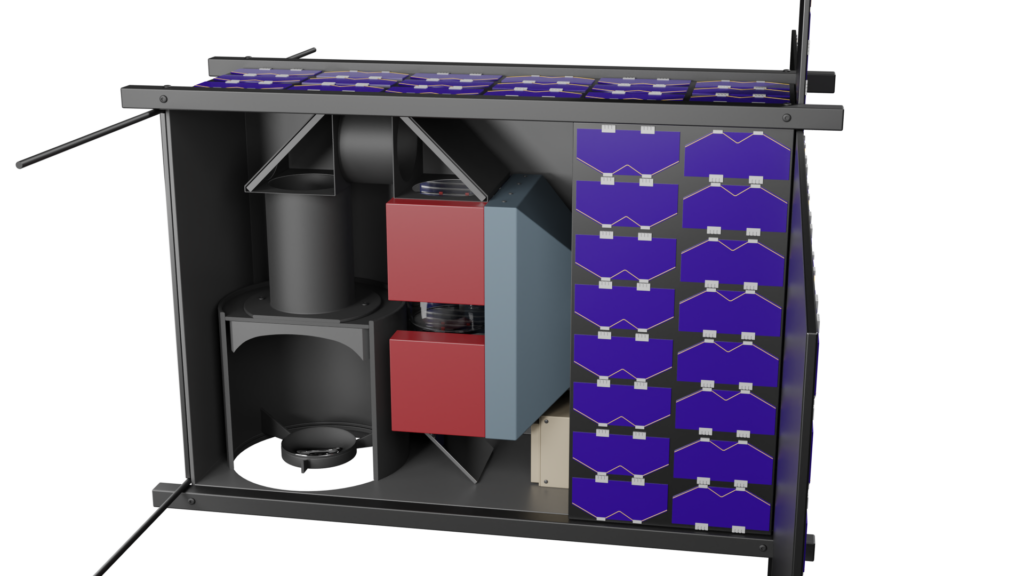The HYADES project will develop a dedicated space telescope to observe hydrogen and deuterium around small bodies in the Solar System. Our goal is to determine the origin of water on our planet and to search for new, previously unknown water reservoirs in the Solar System and other planetary systems. The five-year project will be carried out at the Jagiellonian University.
Water is one of the most important chemical compounds needed for the development of life. Water molecules are also widely present in the universe, being the main component of comets. However, direct observation of cometary water is very difficult.
“It is much easier to observe hydrogen atoms released in the gaseous envelopes of comets due to the decay of water molecules”, said Michal Drahus, HYADES principal investigator.
These atoms emit a very large amount of light through the so-called Lyman alpha line, making them an extremely sensitive tracer of cometary water – both the ordinary water and its heavier variants, whose presence is evidenced by deuterium – the only stable isotope of hydrogen. However, observation of the cometary Lyman alpha line is also very difficult, since it is in the far ultraviolet range and is completely absorbed by Earth’s atmosphere. To solve this problem, as part of the HYADES (HYdrogen And DEuterium Surveyor) a new satellite will be specifically designed to observe the Lyman alpha line from space, outside Earth’s atmosphere.

The scientific payload consists of a reflecting telescope with SiC optics, high performance spectral filter and UV detector.
With unprecedented sensitivity to hydrogen and deuterium, the new tool will allow Polish scientists to seek answers to key questions about the near Universe.
“First of all, we will test different groups of comets as a possible source of water on Earth”, said Michal Drahus.
According to the latest knowledge, our planet formed with virtually no water, so scientists are looking for the source of Earth’s oceans in space. We want to determine the ratio of deuterium to the basic isotope of hydrogen in observed comets and check whether these values agree with the isotopic composition of water in Earth’s oceans. “Over the past 35 years, similar studies have been carried out with the greatest difficulty for 12 comets and inconclusive results have been obtained”, Michal Drahus said. “As part of the HYADES project, we will study composition of water for about 50 comets in just three years!” added Michal Drahus. The research will also determine where and when comets formed during the formation of the Solar System.
Researchers from the Jagiellonian University will also use the satellite’s unusual capabilities to search for previously unknown water resources in the Solar System. They will study, among other things, a group of asteroids that resemble comets in appearance. “The information obtained on the sublimation of water ice from these bodies will give us a unique insight into the water content of the main belt of asteroids”, Michal Drahus said. Confirmation of the existence of a new water reservoir in such close proximity to the Sun would be of great importance in the context of research into the origin of Earth’s oceans and also the history of our planetary system.
The HYADES team will also conduct similar studies for future interstellar objects traversing the solar system. “These objects are of great importance to science, as they formed around other stars and therefore bring us unique information about their parent planetary systems”, said Michal Drahus. To date, only two newcomers from distant corners of the Galaxy have been identified: 1I/’Oumuamua in 2017 and 2I/Borisov in 2019. However, scientists are hoping for more discoveries in the near future with the planned launch of the giant Vera Rubin Observatory. Future surveys of more interstellar objects with the new satellite will help determine the water content of small bodies from other planetary systems, as well as better understand the causes of puzzling orbital anomalies in the absence of detectable dust – such as that observed for ‘Oumuamua.
The HYADES project was developed by the team consisting of: Michał Drahus, Piotr Guzik and Mikołaj Sabat – Jagiellonian University Astronomical Observatory, and Tomasz Kawalec – Jagiellonian University Institute of Physics.